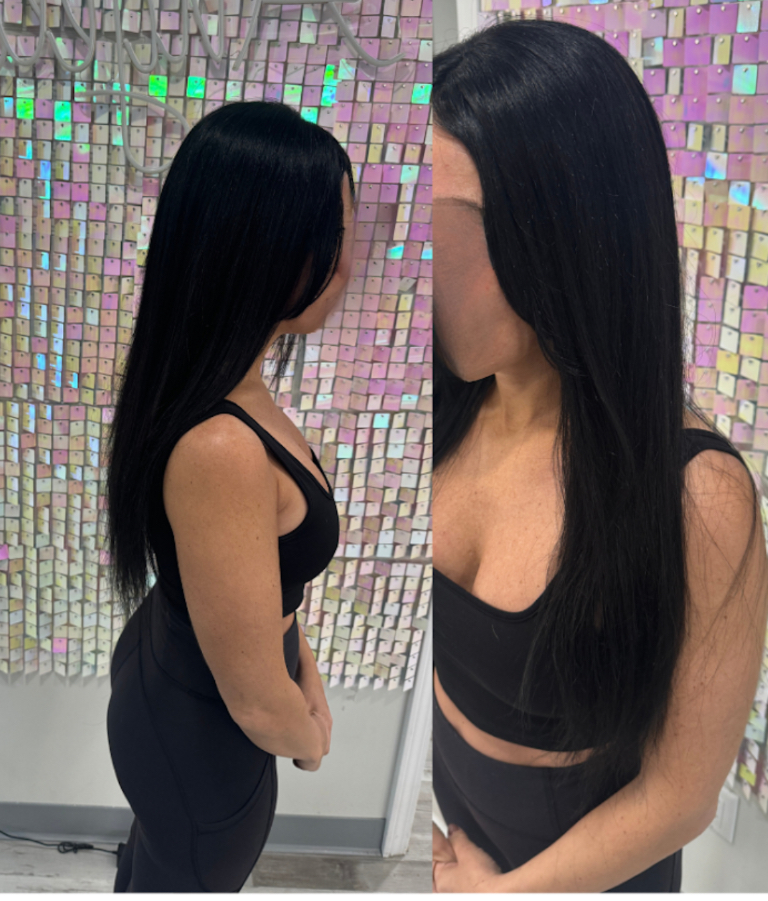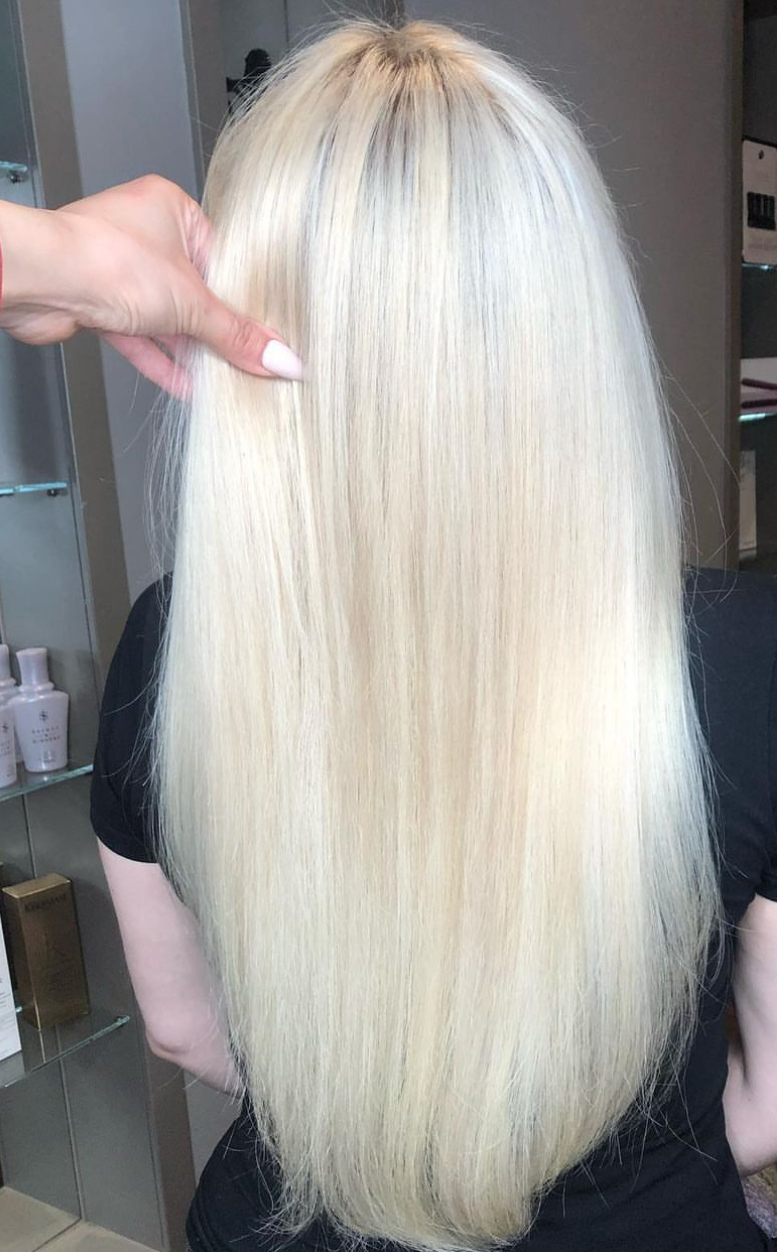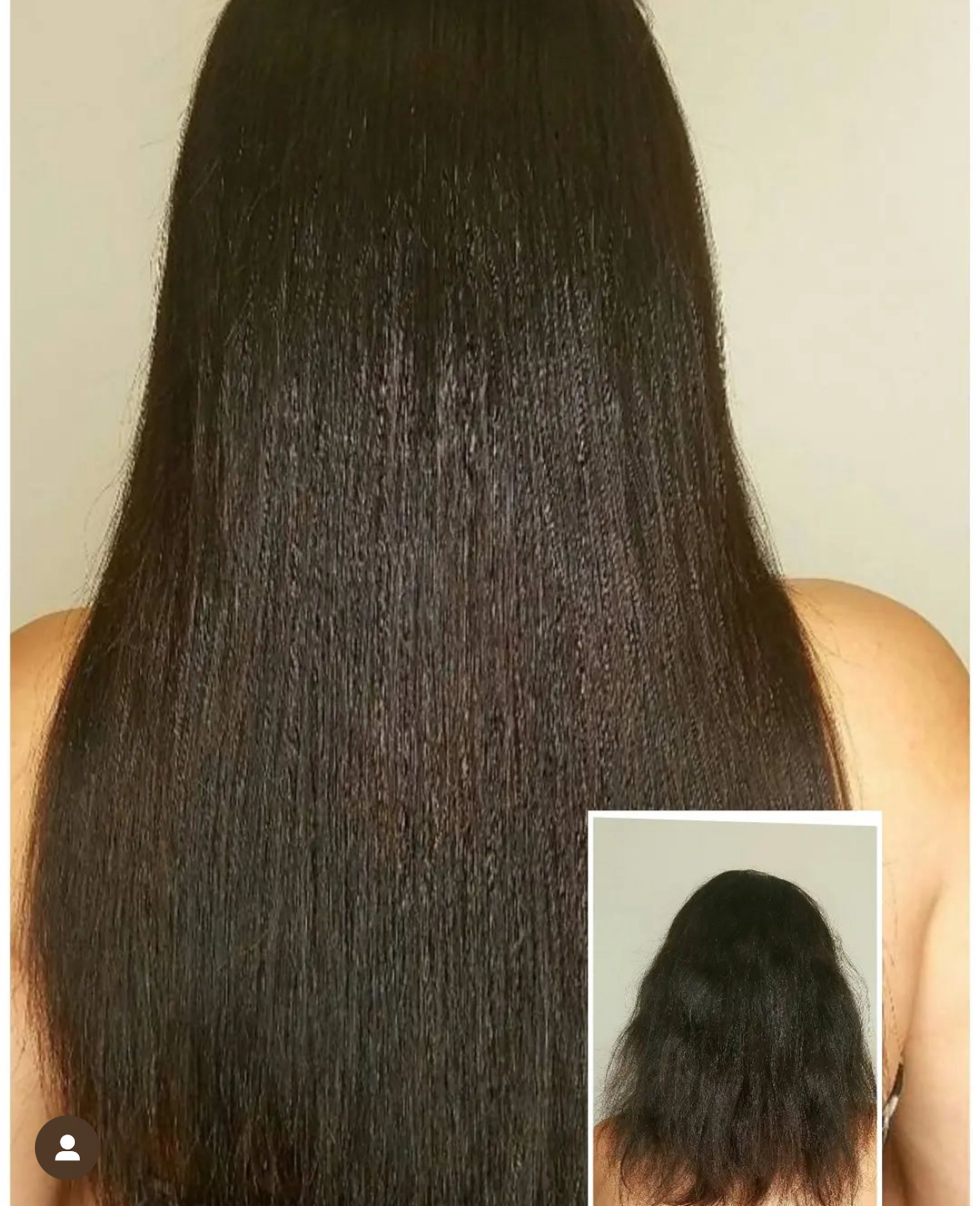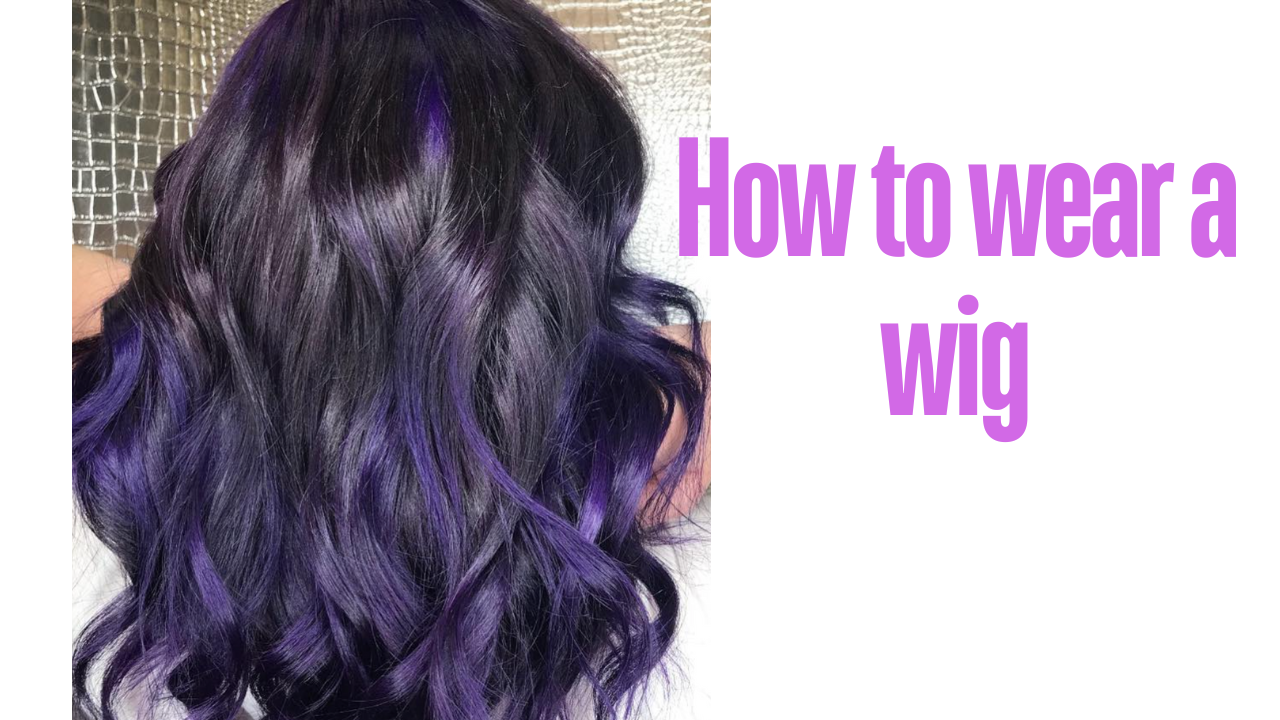Beginner’s Guide: How to Wear a Wig
If you're new to wearing wigs, putting on a wig for the first time can be an exciting yet daunting task. Whether you want to change up your look without commitment or experience hair loss and want to feel like your best self, we've got you covered. We'll teach you not only how to wear a wig but also how to properly care for your wig so it continues to look as beautiful as you are! If you would like a more hands-on approach to learning how to put on a wig, you can follow along on Instagram or book an appointment with a local hairstylist who specializes in wig installation. Ready to learn how to put on a wig?
-
Wig wire brush or regular brush
-
Gel, mousse, or spray bottle of water
-
Bobby pins
-
Hair ties
-
Wig glue
-
Wig tape
-
Wig clips
-
Your wig
We'll walk you through the process step-by-step so you can be a wig-wearing pro.
Understanding Wigs: Types and Benefits
Understanding the different types of wigs and their benefits can help you make an informed decision when choosing the right wig for you. There are various types of wigs available, including lace front wigs, synthetic wigs, and human hair wigs. Each type has its own unique features and advantages. Lace front wigs provide a more natural hairline and are popular for their realistic look. Synthetic wigs are more affordable and require less maintenance, while human hair wigs offer the most versatility in terms of styling options. Consider your needs and preferences when selecting the type of wig that suits you best.
 Preparing to Wear a Wig: What You Need
Preparing to Wear a Wig: What You Need
Before putting on a wig, it's important to gather the necessary tools and accessories to ensure a smooth and secure application. Here's what you'll need:
-
Wig cap: A wig cap helps to secure your natural hair and provides a smooth surface for the wig to sit on.
-
Bobby pins: These small pins can be used to secure the wig cap and keep your wig in place.
-
Wig clips: Wig clips are small comb-like accessories that can be sewn into the wig to provide additional security.
-
Wig tape: Wig tape is a double-sided adhesive that can be used to attach the wig to your scalp for a more secure fit.
These tools and accessories are essential for a comfortable and secure wig-wearing experience.
Essential Tools and Accessories
A wig cap is a must-have accessory for wearing a wig. It helps to secure your natural hair and creates a smooth surface for the wig to sit on. Wig caps are available in different materials such as durable cotton, nylon/mesh, and aloe vera/bamboo. Choose a wig cap that suits your needs and provides the desired level of comfort.
Bobby pins are essential for securing the wig cap and keeping your wig in place. Use them to secure the wig cap along the hairline and at the back of your head. Make sure the bobby pins feel secure and lie flat on your head for maximum effectiveness.
Wig clips are small comb-like accessories that can be sewn into the wig to provide additional security. These clips can be attached to your natural hair or the wig cap, depending on your preference. Wig clips are especially useful for those with longer or thicker hair.
Wig tape is a double-sided adhesive that can be used to attach the wig to your scalp for a more secure fit, providing extra hold. It is an alternative to glue and is ideal for those who prefer a temporary attachment method. Wig tape is easy to apply and remove, making it a convenient option for everyday wear.
By using these essential tools and accessories, you can ensure a comfortable and secure fit for your wig.
Selecting the Right Wig for Your Head Shape
Selecting the right wig for your head shape is crucial to achieving a natural and flattering look. Here are some general guidelines for choosing a wig based on your head shape:
-
Measure your head: Use a tape measure to determine the circumference of your head. Start at the front hairline, go around the back of your head, and return to the starting point. Note down the measurements to qualify for free shipping.
-
Determine your head shape: There are various head shapes, including round, oval, square, heart-shaped, and diamond-shaped. Determine your head shape by analyzing the proportions of your forehead, cheekbones, and jawline.
-
Choose a wig style: Different wig styles complement different head shapes. Refer to the text table below for guidance on which wig styles suit various head shapes:
Head Shape | Wig Style
Round | Long, layered wigs
Oval | Most wig styles
Square | Wigs with soft edges
Heart-shaped | Short, layered wigs
Diamond-shaped | Chin-length wigs
By selecting a wig that flatters your head shape, you can enhance your overall appearance and achieve a more natural look.

Tips for Achieving a Secure Fit
Ensuring a snug fit is crucial for both comfort and realism when wearing a wig. Start by choosing the right wig size; a customized fit minimizes slippage. Using accessories like wig grips, a bun, or silicone strips can enhance stability, while bobby pins provide extra hold at the nape and the front hairline. Adjusting the straps on the wig cap establishes a secure fit, allowing you to confidently style your hair without the worry of movement.
Using Wig Grips, Clips, and Combs for Extra Security
Different types of wigs cater to various preferences and styles. From synthetic options to luxurious human hair wigs, each offers unique benefits such as versatility and ease of maintenance. For first-time wearers, understanding wig size and determining the best wig size fit is crucial. A properly fitted wig cap can create a snug fit, while using bobby pins and straps provides an extra hold for a secure fit. Exploring these options ensures your wig looks natural and feels comfortable on your scalp.
Step-by-Step Guide How to Properly Wear Wig
Now that you have the necessary tools and knowledge, let's walk through the step-by-step process of wearing a wig. Follow these simple steps to ensure a comfortable and secure fit:
Prepping Your Natural Hair: Prepare your hair by either dampening it with water or using gel or mousse to create a flat surface. For short hair, brush your hair back and pin it in place with small bobby pins. For long hair, consider braiding your hair or putting it in a low ponytail.
-
Applying the Wig Cap: Put on the wig cap, making sure it covers your ears and sits firmly on your hairline. Tip: Choose a wig cap close to your skin tone to ensure a natural look. Tuck in any loose ends and flyaways underneath the wig cap.
-
Placing the Wig on Your Head: Grasp the wig by the ear tabs and gently flip it over your head, starting at the front hairline. Tilt your head forward and gradually pull the wig over your head.
-
Securing the Wig: Use wig clips, bobby pins, or toupee clips to secure the wig to your natural hair or the wig cap. Place them strategically around the perimeter of the wig for maximum hold.
-
Styling and Adjustments: Style the wig as desired using wig-friendly products and heat tools. Make any necessary adjustments to ensure a comfortable and natural-looking fit.
By following these steps, you can confidently wear a wig and achieve the desired look.
Step 1: Prepping Your Natural Hair
Before putting on a wig, it's important to prepare your natural hair to ensure a smooth and secure fit. The key to a proper wig fit is to get your natural hair as flat as possible, minimizing any interference with the wig adhesive. Here's how to prep your hair based on its length:
For short hair: Dampen your hair with water or use gel or mousse to create a flat surface. Brush your hair back and pin it in place with small bobby pins to keep it as flat as possible.
For long hair: Dampen your hair with water to make it easier to braid or style. There are several options for preparing your long hair:
-
Put your hair in a low ponytail and pull the tail up over your head when you put on the wig cap.
-
Braid your hair in two to four braids, depending on your hair thickness. Wrap the braids evenly around your head and secure them with bobby pins.
-
If you have type 3 or 4 hair, consider putting your hair in cornrows for a more secure and flat base.
Regardless of your hair length, make sure your bobby pins or toupee clips feel secure and lie flat on your head. You can also use toupee clips if you have a lot of hair. Prepping your natural hair will create a smooth surface for the wig cap and ensure a comfortable and secure fit.
Step 2: Applying the Wig Cap
Once you have prepped your natural hair, it's time to apply the wig cap. A wig cap is essential for securing your natural hair and creating a smooth surface for the wig to sit on. Follow these steps to apply the wig cap:
-
Choose the right wig cap size that fits your head comfortably for custom wigs. Start at the back of your head and wrap the wig cap over the top, so it sits firmly on your hairline.
-
Tuck in any loose ends and flyaways underneath the wig cap to create a clean and secure base for the wig.
-
Make sure the wig cap covers your ears and extends to the perimeter of your hairline. This will ensure that the wig sits securely and comfortably on your head.
The wig cap acts as a barrier between your natural hair and the wig, protecting your hair and providing a secure foundation for the wig to be placed on. It also helps to prevent friction and itching caused by direct contact between the wig and your scalp. Applying the wig cap is an important step in achieving a comfortable and natural-looking wig-wearing experience.
Step 3: Placing the Wig on Your Head
With the wig cap securely in place, it's time to put on the wig. Follow these steps to correctly place the wig on your head:
-
Grasp the wig by the ear tabs, which are located on the sides of the wig. Flip the wig over your head, starting at the front hairline.
-
Tilt your head forward to allow the wig to slide over the back of your head. Gently pull the wig over your head, making sure it covers the wig cap and sits securely.
-
Adjust the wig so that the front of the wig aligns with your natural hairline. The front of the wig should sit approximately four finger widths from the top of your eyebrows for a natural look.
-
Make sure the ear tabs of the wig are positioned in front of your ears, not covering them. This will ensure a comfortable fit and a natural appearance.
By following these steps, you can properly place the wig on your head and achieve a secure and natural-looking fit. Adjust the wig as needed to ensure a comfortable and seamless blend with your natural hairline.
Step 4: Securing the Wig
To ensure a secure and comfortable fit at the nape of the neck, it's important to properly secure the wig to your head. Here are some methods you can use:
-
Wig clips: Wig clips are small comb-like accessories that can be sewn into the wig. They can be attached to your natural hair or the wig cap to provide additional security. Place the wig clips strategically around the perimeter of the wig for maximum hold.
-
Bobby pins: Bobby pins are a simple and effective way to secure your wig. Choose bobby pins that match the color of your wig or your natural hair. Slide the bobby pins between the wig cap and your head, making sure they feel secure and lie flat.
-
Toupee clips: Toupee clips are similar to wig clips but are slightly larger. They are ideal for those with a lot of hair or who need extra security. Sew about four to six toupee clips along the inside of the wig, evenly distributing them for a secure hold.
Using these methods will provide additional security and peace of mind while wearing your wig. Adjust the clips or pins as needed to ensure a comfortable fit.

Step 5: Styling and Adjustments
Once your wig is securely in place with wig grips, you can proceed with styling and making any necessary adjustments. Here are some tips from a wig expert for styling and achieving a natural look:
-
Styling: Use wig-friendly products and tools to style your wig as desired. Avoid using heat tools on synthetic wigs unless they are heat-resistant. For human hair wigs, you can use heat tools to curl or straighten the hair.
-
Blending with natural hair: If you have any natural hair exposed around the wig, blend it with the wig using a wide-tooth comb or your fingers. This will create a seamless transition between your natural hair and the wig.
-
Lace front adjustments: If you are wearing a lace front wig, make sure the lace blends seamlessly with your skin for a natural hairline. Trim any excess lace and use glue or tape to secure it in place.
-
Taming stray hairs: Use a wig brush or a wide-tooth comb to gently brush and tame any stray hairs. Apply a small amount of wig-friendly product to keep the style in place and give the wig a polished look.
By styling and making any necessary adjustments, you can achieve a natural and flawless look with your wig. Experiment with different styles and find what works best for you.
Effective Methods for Wearing a Wig with Long Hair
Achieving a natural look while wearing a wig with long hair can be effortlessly done with the right techniques. Start by securing your natural hair in a bun or ponytail, ensuring a snug fit against your scalp. Utilize a wig cap to create a smooth surface and prevent slippage. For added security, consider using bobby pins or wig grip straps along the edges of the wig. This combination not only ensures a secure fit but also allows for easy styling, enhancing your overall appearance. For more tips, check out the Facebook community and Pinterest where enthusiasts share their experiences.
Caring for Your Wig: Maintenance Tips
Proper maintenance is essential to keep your wig looking beautiful and prolong its lifespan. Here are some maintenance tips to help you care for your wig:
-
Cleaning: Follow the specific instructions for your wig, but generally, synthetic wigs should be washed every seven wears and human hair wig every four to five years. Use wig-friendly shampoo and conditioner, and let the wig air dry.
-
Storage: Store your wig on a mannequin head, pillowcase, or silk bag to maintain its shape and prevent tangling.
-
Brushing: Use a wig brush or wide-tooth comb to gently detangle the hair. Start from the ends and work your way up to avoid damage.
-
Avoid heat: Synthetic wigs cannot withstand heat styling, so avoid using heat tools on them. Human hair wigs can be styled with heat tools, but use caution and protect the hair with heat-protectant products.
By following these maintenance tips, you can keep your wig looking fresh and beautiful for longer.
Daily Care Routine
To keep your wig looking fresh and beautiful, it's important to establish a daily care routine. Start by wearing a wig liner underneath your wig. This not only helps protect your sensitive skin but also extends the lifespan of your wig by preventing natural oils from coming into contact with it.
Throughout the day, you may notice that your wig can become a bit dry or tangled. To combat this, keep a spray bottle of water handy and lightly mist your wig to add moisture and revive the style. Additionally, it's common for stray hairs or loose ends to appear along the hairline. Simply use a small brush or comb to gently smooth them back into place for a polished look.
By incorporating these simple steps into your daily routine, you can ensure that your wig stays looking its best for longer.
Washing and Drying Your Wig
Regular washing and drying are essential for maintaining the cleanliness and longevity of your wig. The specific care instructions can vary depending on whether your wig is made of synthetic hair or human hair.
For synthetic hair wigs, start by filling a sink or basin with warm water and adding a teaspoon of wig-friendly shampoo. Gently swish the wig in the water for a few minutes to remove any dirt or residue. Rinse the wig thoroughly with cool water to ensure all the shampoo is washed out. Lay the wig on a microfiber towel to remove excess water and allow it to air dry.
For human hair wigs, the process is similar, but you can use a wig-friendly conditioner after washing to keep the hair soft and manageable. Gently squeeze out any excess water and lay the wig on a towel to air dry. It's important to avoid using heat tools or excessive brushing when drying human hair wigs to prevent damage.
By following these washing and drying techniques, you can keep your wig looking fresh and clean.
Solving Common Wig Wearing Issues
While wearing a wig can be a great way to change up your look, there are some common issues that a lot of people who are wig wearers may encounter. Two common issues include slippage and itchiness.
Dealing with Slippage
Slippage can be a frustrating problem, but there are several solutions. One option is to use wig tape or adhesive to secure the wig in place. Wig tape can be applied along the inside of the hairline for a secure fit. Another option is to use wig clips or snaps, which can be sewn onto the inside of the wig and attached to your own hair or wig cap. Finally, if your wig has adjustable tabs, you can tighten them for a more secure fit.
By implementing these techniques, you can ensure that your wig stays in place throughout the day.
Managing Itchiness
Itchy scalp can be a common issue when wearing a wig, especially for those with sensitive skin. One solution is to choose a wig cap made of breathable materials, such as cotton or bamboo, which can help alleviate discomfort and prevent matting. Additionally, applying a small amount of aloe vera gel to your scalp before putting on the wig can provide a soothing sensation and help reduce itchiness. Finally, ensure that your wig is not too tight or too loose, as a comfortable fit can help prevent irritation.
By following these tips, you can manage itchiness and ensure a comfortable wig-wearing experience.
ALSO READ: https://noellesalon.com/blogs/hair-color-style/wigs-boston-expert-tips-for-flawless-wig-wearing
Conclusion
Whether you're a beginner or an experienced wig wearer, this guide has covered everything you need to know about wearing a wig with confidence. Understanding the types, benefits, and maintenance tips is essential for a flawless wig experience. By following the step-by-step guide and taking care of your wig properly, you can rock any look effortlessly. Remember, wearing a wig is not just about style; it's about expressing yourself and boosting your confidence. So, embrace the versatility of wigs and enjoy transforming your look whenever you feel like it.




